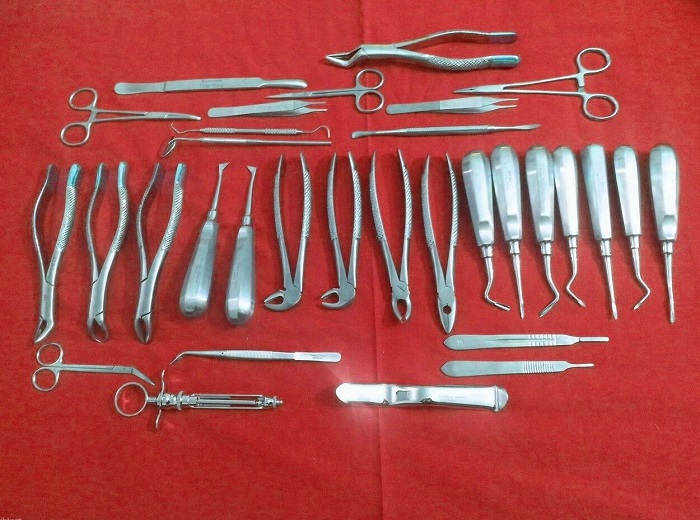There is an extensive list of oral surgical instruments and several variations. No doubt, it is not possible to purchase all the oral surgery instruments or categories for dentistry procedures. But dental probes, tweezers, mouth mirrors, and dental trays are must-have gears in all dental settings. Besides that, some handheld dental tools assist the surgeon in identifying the problem and exploring the affected area before the treatment. For instance, the auxiliary tools in operative dentistry include spreaders, dental files, high spend rotating handpieces, and many more.
Read on to know about other oral surgery tools and how to maintain them in this post!
Manufacturing Material Of The Oral Surgical Instruments
Dental tools can have different manufacturing materials, such as stainless steel alloys. The dental utensils preferably have stainless steel (inox), dumoxel, titanium, or dumostar material.
Which Are The Basic Handheld Dental Instruments?
Basic handheld oral surgical instruments include a mouth mirror, dental explorer, college pliers, and periodontal probe. These tools have a similar design, handle, shank, and sharp blade. Therefore, the working end of the tools is suitable for performing all tasks during the dental surgery procedure. On the other side, the shank connects the blade and handle. Not only this, it features several bends to have access to different mouth areas. This ergonomic handle is the perfect portion for the user to hold.
Dental Elevators
The extraction procedure is not possible without the elevators. The elevators have a certain structure to extract the teeth without damaging the nearby tooth particles. Besides, it will be luxating the teeth for pulling them from their sockets. Furthermore, all the variations of the oral surgical instruments elevators assist in mobilizing the roots which are broken or fractured. It is also the best option to use instead of forceps when roots are unable to be grasped with them. An elevator comes with a handle and blades of several variations to engage rightly with the obscured areas. Likewise, the handle has an ergonomic structure for secure grasping.
Dental Forceps
The dental extraction forceps are also made to assist while extracting a tooth. This instrument’s main purpose is to grab, manipulate, and remove roots or teeth. Besides, dental surgeons prefer using ergonomically shaped tools to make their extraction atraumatic. The forceps are available in several variations. In fact, the tool has pointed beaks to grab the target area with a firm grip. Additionally, the tool has serrated handles to prevent slippage.
Dental Excavator
The dental excavator is made for removing the dentin, decay, soft debris to prevent cavity buildup. This instrument is designed like a spoon shape with long, sharp, or circular working ends. Besides, it has a double-ended structure with an ergonomic handle and multiple tip diameters. The excavator is a highly reliable, durable, and unbendable instrument. It is quite simple to clean and sterilize without affecting the instrument’s body. Surely, it will be the best addition to your dental surgical instruments kit.
Maintenance Of The Dental Instruments
The oral surgical instruments are quite efficient, but they can get dull after a certain duration of usage. However, it is crucial to keep the instruments sharp to use them in dental practices efficiently. Besides, examination of the dental surgical instruments is necessary after a few days and even before use.
How Does Dental Anglevator Work?
The dental anglevator works according to the lever’s principle for loosening, removing, or impacting teeth in oral surgical procedures. It features an ergonomic handle, sharp tip, color-coated pattern, and six amazing combinations of tools. Best of all, it makes the extraction procedure less time-taking and atraumatic.
